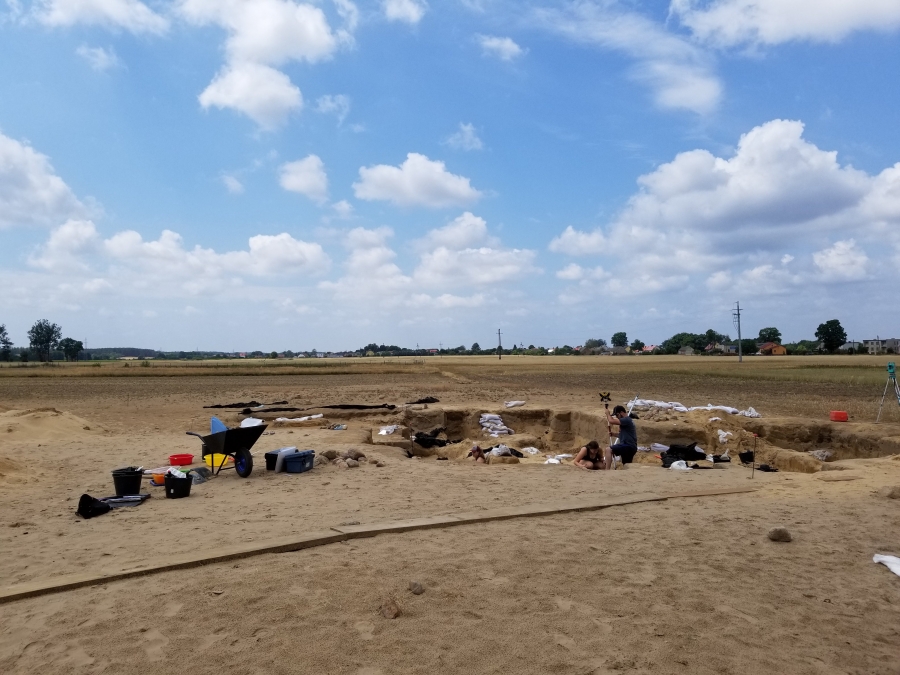
Part two of a continuing series about experiences on an archeological dig in Poland
One of the most iconic Halloween costumes is the vampire. Dark clothes, a cape and fangs are all you need to imitate Dracula or any other vampire from popular horror movies. However, there was a time when people were genuinely afraid of vampires, and evidence of this can be seen in a cemetery on the outskirts of Poznan, Poland.
This summer I participated in the Slavia Foundation’s archaeological field school. We excavated both Bronze Age (IV and V Period) cremated burials and Early Modern (16th-18th c) burials. The Early-Modern period in Poland was dominated by Christianity, but many Pagan beliefs were still practiced.
‘Typical graves’ consisted of skeletons that had no rocks, sickles or any other items on them. Coins have been found in the atypical and typical graves, but these are a common funerary item and are not considered atypical. On what we called ‘atypical graves’, rocks had been placed on necks or on other body parts. Sickles had also been found at this site, carefully placed on the necks of the decreased.
“I think that the atypical burials are the most interesting because I have dug some cemeteries in Poland, probably a couple hundred graves by myself, and they never have that kind of atypical grave like you find here,” said Maciej Gembicki, an archeology instructor with the Slavia Foundation.
This practice was thought to stop the recently deceased from being inhabited by a demonic spirit, such as a vampire, that would cause trouble for the living. In other sites across Europe more extreme examples to prevent or stop vampirism have been seen, including body mutilation. One example of this is cutting off the feet of a body that is suspected to be possessed by vampires. No one is quite sure why the efforts to prevent vampirism were only directed at some graves.
“On the bones there is no evidence they were different,” said Marta Gwizdala, the project osteologist. “There was nothing wrong with them on the bones. I think maybe because of their [the deceased’s] behavior or maybe because their death was sudden and unexpected…For sure, I believe they wanted to protect themselves and also the person who was dead.”
Though the site does not have a church associated with it, the burials are known to be Christian due to how they were found. In this time period, Christians were buried facing East due to their beliefs about the resecuration and the end of times. Clearly, the people who once lived near the graveyard had a dual set of beliefs that were of Christian and Pagan origin. No one knows where the first instances of vampirism beliefs originated, but people in Poland and other Slavic areas thought vampires existed long before the legend of Dracula in Transylvania.
“It’s just interesting how they merged the idea of Christianity and old Pagan beliefs in the burials around here,” said Colin Steele, a student who also helped excavate the site. “They [the archeologists] were saying they even found some rosary beads around. Which is interesting because it means they’re finding new means to fight off old evils.”
Written by: Rachel Paul— science@theaggie.org



